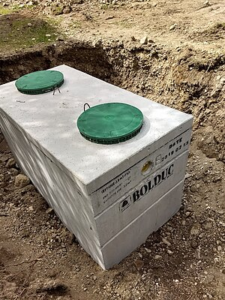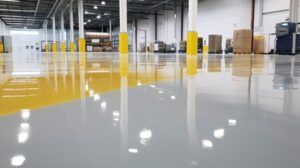Whether you’re a coffee shop or a fitness studio, optimizing your Google Maps profile can boost visibility and attract more customers. In this article, we’ll explore strategies for getting your Google Maps listing to rank higher and appear in the coveted Google Maps “Local Pack”.

Showing up high on local search listings like Google Business Profiles can increase phone calls and in-person visits. This tool can help you track your results over time and make informed decisions. Click Here for more information.
Local map listings (sometimes called local citations) are online profiles that include important information about your business, such as name, address, phone number, and website. They are usually displayed on search engines when people look for businesses in a particular geographic area. Being on a local map listing can increase your visibility to potential customers and generate more foot traffic and online traffic.
Local SEO is a complex process that involves optimizing your Google Business Profile, establishing links with other local websites, and creating geo-specific listings for each of your physical locations. For enterprise-level businesses, it can be challenging to update and publish accurate listings for each location, especially when you have many different locations.
A specialized digital marketing agency that manages local map listings seo for small businesses can help you generate new orders and leads in a cost effective manner. Most buyers prefer to hire a service provider or shop that is located in their vicinity, as it saves them time and energy from travelling long distances. They also have a tendency to trust and buy products and services that have received good reviews from previous users.
Google My Business (GMB) profile
A GMB profile is a crucial tool for local SEO. It enhances a business’s visibility in Google Search and Maps and boosts organic traffic by helping customers discover it. An optimised GMB profile includes accurate information, engaging visuals, and active customer engagement, which leads to more website and in-store traffic. A GMB listing also increases the odds of appearing in the Google Local Pack, which showcases the top three local businesses related to a user’s search query.
GMB is constantly evolving, with new features and updates introduced regularly. It’s important to stay informed of these changes and to use all the tools at your disposal. Underutilizing these features can significantly decrease your profile’s effectiveness.
You should add keywords in your business description to help Google connect it with users who are looking for the services or products you offer. These keywords should be relevant to your location, such as “plumber in Brooklyn” or “Thai restaurant near Downtown.” You can also use Google Posts to share offers and events with potential customers. GMB posts are shown above the search results, and they often generate more clicks and engagement than regular organic listings.
Google is making a big shift towards more personalised and localised search results. Increasingly, it’s using GMB to promote businesses based on their location. This heightened localisation is especially important for small businesses, who rely on a strong online presence to drive traffic and sales.
If you have multiple business locations, each one should have a GMB profile. Managing each location separately allows you to tailor the information, reviews, and photos for each location while maintaining consistency across the brand. It’s also possible to specify service areas in your GMB profile, which is helpful if you operate a mobile business or deliver goods and services to nearby customers.
Moreover, you can link your GMB account to Google Ads and enable location extensions in your ads. This feature displays your business address, a map to your location, and the distance from the user’s device to your business. This can significantly improve your advertising performance and boost your local SEO.
Regularly updating your visual content
A well-optimized map listing with visual media is more engaging for potential customers and can drive immediate action. For example, a customer searching for a service provider can easily call your business after seeing photos of its storefront and staff, which simplifies the buying process. In addition, a Google My Business (GMB) profile that is rich in media is more likely to rank higher for local search results because it enhances the user experience. Additionally, keywords in photo descriptions, alt text, and filenames can be optimized to boost SEO, driving more organic traffic to your website.
In addition to providing a clear idea of what your business is all about, engaging visuals also help establish trust and credibility. Customers are 2.7X more likely to consider businesses that have complete and up-to-date Business Profiles as reputable, which can lead to greater brand awareness, website traffic, and direct engagement.
Optimizing for the Google Map Pack is one of the best ways to boost local search rankings, resulting in more traffic and sales. However, ranking in the Map Pack requires a multi-faceted local marketing strategy that includes optimizing your GMB profile, website, and social media, as well as conducting local SEO. It also depends on how well your business has been reviewed by customers, the quality of your content, and other ranking factors. Nevertheless, optimizing for the Map Pack can lead to significant growth in online and in-person traffic for your business. To maximize its effectiveness, your business should regularly update your maps with fresh images that showcase seasonal events, special offers, or new product lines.
Reputation management
Reputation management is critical for local map listings, as it increases consumer trust and visibility. But it can be time-consuming and difficult to measure the ROI of your efforts. To streamline and elevate this process, a specialized platform is needed to manage reviews, listing accuracy, and monitoring at scale. The best solution is to partner with a company that specializes in these tasks and has a proven track record of success.
The Google Map Pack is a prominent section in the local search results that highlights top-ranked local businesses. It provides users with contact information, hours of operation, and directions to the business’s physical location. Getting into the Map Pack requires using a combination of local SEO strategies, including optimizing Google Business Profiles and leveraging reviews.
A well-optimized Map Pack listing with engaging visuals encourages consumers to take action, whether it’s calling a business directly from their mobile device or visiting their website. This can increase the conversion rate for businesses, as potential customers often make purchasing decisions without navigating to the website.
Engaging visuals also reinforce the credibility of a local business, as they show that the company is legitimate and active. For example, restaurants with photos of delicious food and inviting decor are more likely to attract customers. In addition, high ratings and positive reviews also boost trust in a business.
Managing reviews and listings at scale is challenging for brand channel partners, especially when they have multiple locations in the same city or region. This is why a centralized platform that simplifies and elevates the process of updating listings, monitoring feedback, and responding to reviews is important for channel brands. Such a tool can also reduce administrative overhead and ensure that no review or listings are overlooked.
It is also important for channel brands to monitor the performance of their local map listing and review management initiatives at a granular level. This enables them to quickly identify and correct any issues that may impact their visibility or reputation. This can be done by tracking key metrics, such as rankings, search traffic, and customer conversions. By doing so, channel brands can optimize their strategies and prove the value of their efforts to internal stakeholders.





